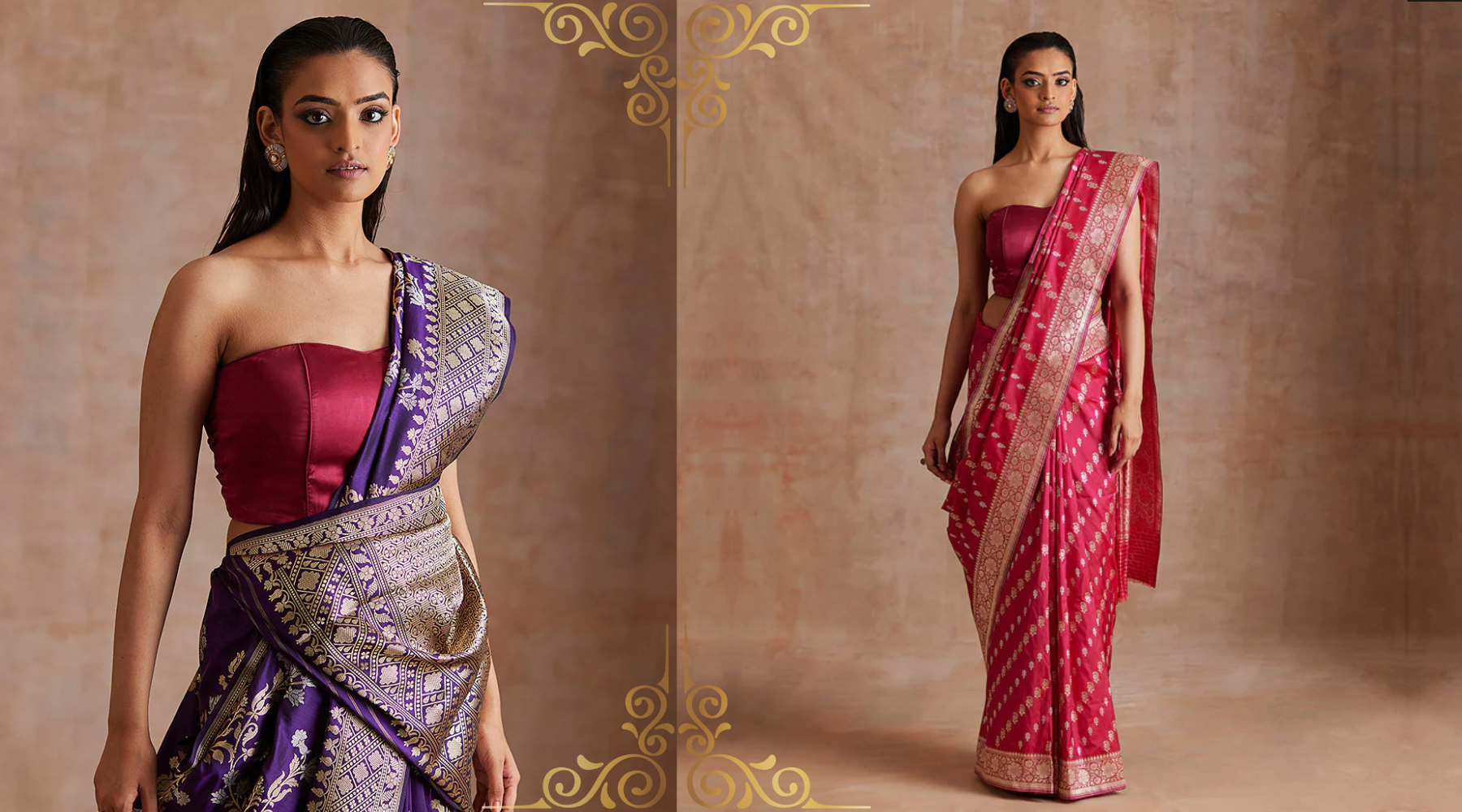The saree is an iconic garment that has been an integral part of Indian culture for centuries. It is a long piece of fabric draped around the body in various styles and worn by women of all ages and backgrounds. It is an embodiment of the rich history and culture of the country. A garment that embodies the beauty, elegance, and cultural heritage of India, the saree is worn by women of all ages and backgrounds. The saree-making process involves intricate craftsmanship and techniques that have been passed down through generations.
The art of saree-making can be traced back to the Indus Valley Civilization, which existed around 2800 BCE. The saree was originally made from cotton and silk, and the fabrics were handwoven and dyed using natural dyes. Today, the saree is still made using traditional techniques, but modern technology has also been introduced to make the process more efficient.
Once the saree has been decorated, it is time to add the final touches, which include hemming and finishing the edges. The hemming process involves folding and stitching the edges of the saree to prevent them from fraying. The finishing process involves adding the final touches to the saree, such as adding tassels or decorative elements.
India is known for its rich cultural diversity and handloom sarees are an integral part of Indian textiles. There are various types of handloom sarees made in different regions of India, each with its own unique style, weaving technique, and design. WeaverStory.com, a collection of the finest weaves from Banaras, Chanderi, Gujarat, Bengal, Maheshwar and Kanchipuram with an exquisite range of sareess, lehengas, dupattas, suits and fabrics, was founded as an initiative to preserve and promote Indian handloom. The sophisticated weaving techniques that have been lost since the 19th century, such as the baluchari, shikargahs, kadhwa, and jamdani weave, as well as fabrics woven with a variety of designs, including floral motifs and animal representations, are being brought back to life by WeaverStory. Here are some of the popular types of handloom sarees in India available on the WeaverStory :
1. Banarasi Saree:
Made in Varanasi, Uttar Pradesh, Banarasi Sarees are known for their intricate designs and heavy embroidery work. They are usually made of silk and are worn on special occasions like weddings and festivals.
Handloom Red Double Shade Pure Katan Silk Banarasi saree With Floral Meenakari Jaal
2. Kanjivaram Saree:
Made in Kanchipuram, Tamil Nadu, Kanjivaram sarees are known for their rich texture and vibrant colors. They are made of pure silk and have unique designs woven into the fabric using zari threads.
Pink Handloom Pure Silk Kanjivaram Saree With Gold Zari Checks
3. Chanderi Saree:
Made in Chanderi, Madhya Pradesh, Chanderi sarees are made of cotton, silk, or a blend of both. They have a sheer texture and are known for their delicate designs and patterns.
4. Patola Saree:
Made in Patan, Gujarat, Patola sarees are known for their vibrant colors and intricate designs. They are made of silk and have a unique double ikat weaving technique.
Handloom White Pure Mulberry Silk Single Ikat Patola Saree With Maroon Border
5. Bandhani Saree:
Made in Rajasthan and Gujarat, Bandhani sarees are known for their tie-and-dye technique, where the fabric is tied in small knots before being dyed. They usually have bright colors and bold designs.

Orange Handloom Pure Georgette Banarasi Bandhej Saree With All Over Zari Jaal
Handloom sarees are a beautiful reflection of India's rich cultural heritage and craftsmanship. Each saree is a unique piece of art, meticulously crafted by skilled weavers using traditional weaving techniques that have been passed down through generations. The intricate designs and patterns woven into the fabric using natural fibers like cotton and silk, and the vibrant colors that adorn the sarees, make them a sight to behold. The beauty of handloom sarees lies in their elegance, durability, and the love and effort that goes into creating them. Wearing a handloom sarees not only adds grace and beauty to a woman's attire but also promotes and supports the preservation of Indian handloom traditions.
Author - Aditi Bapna















